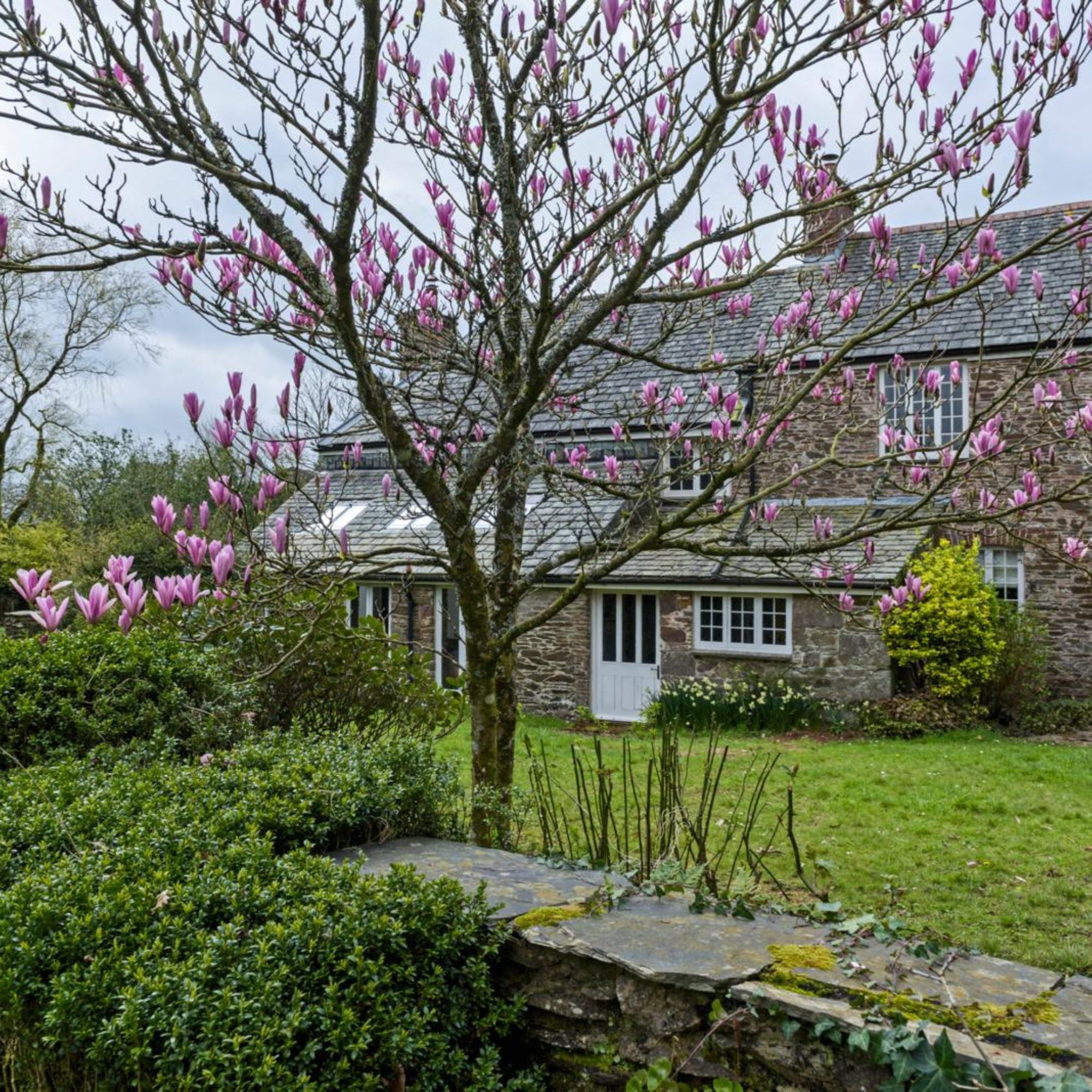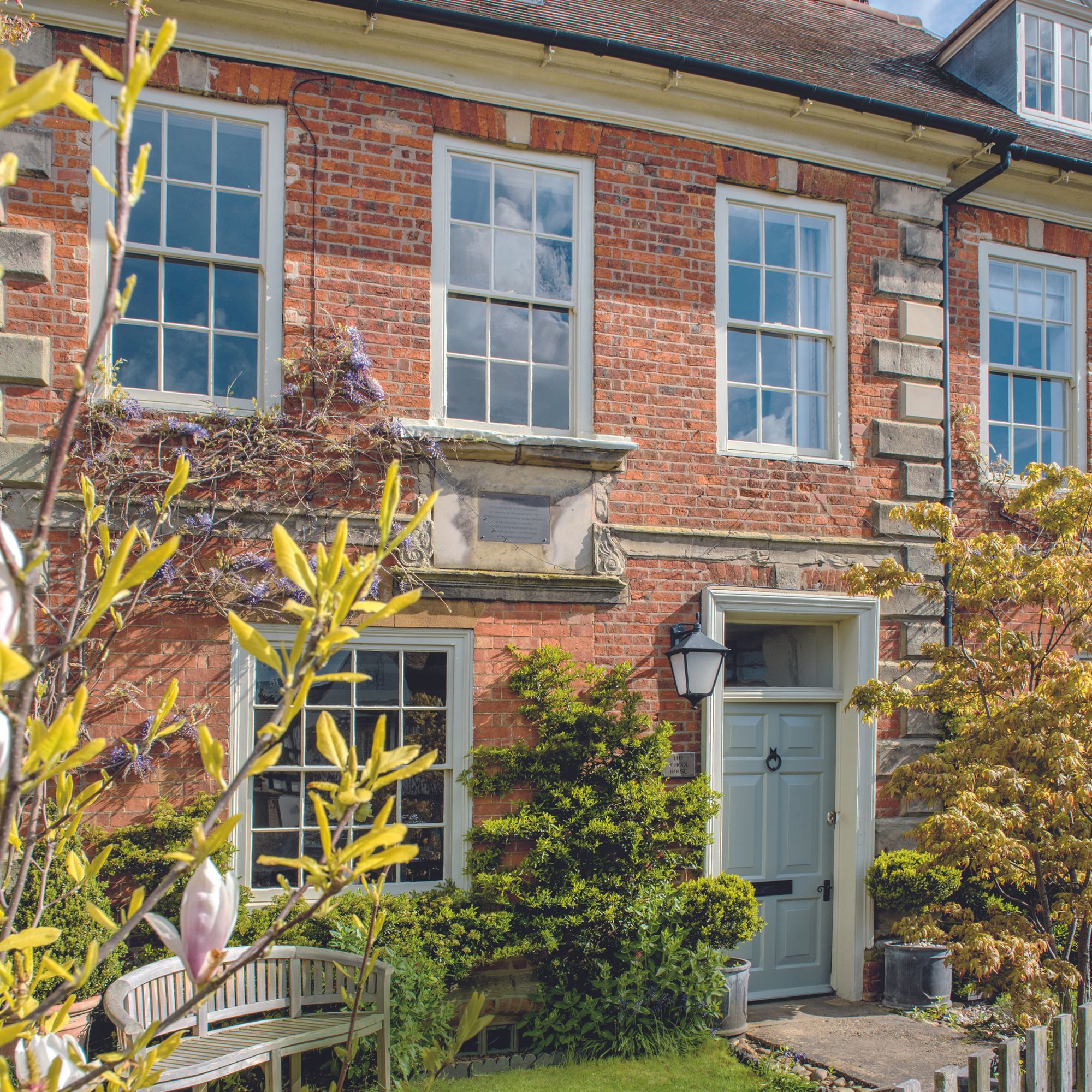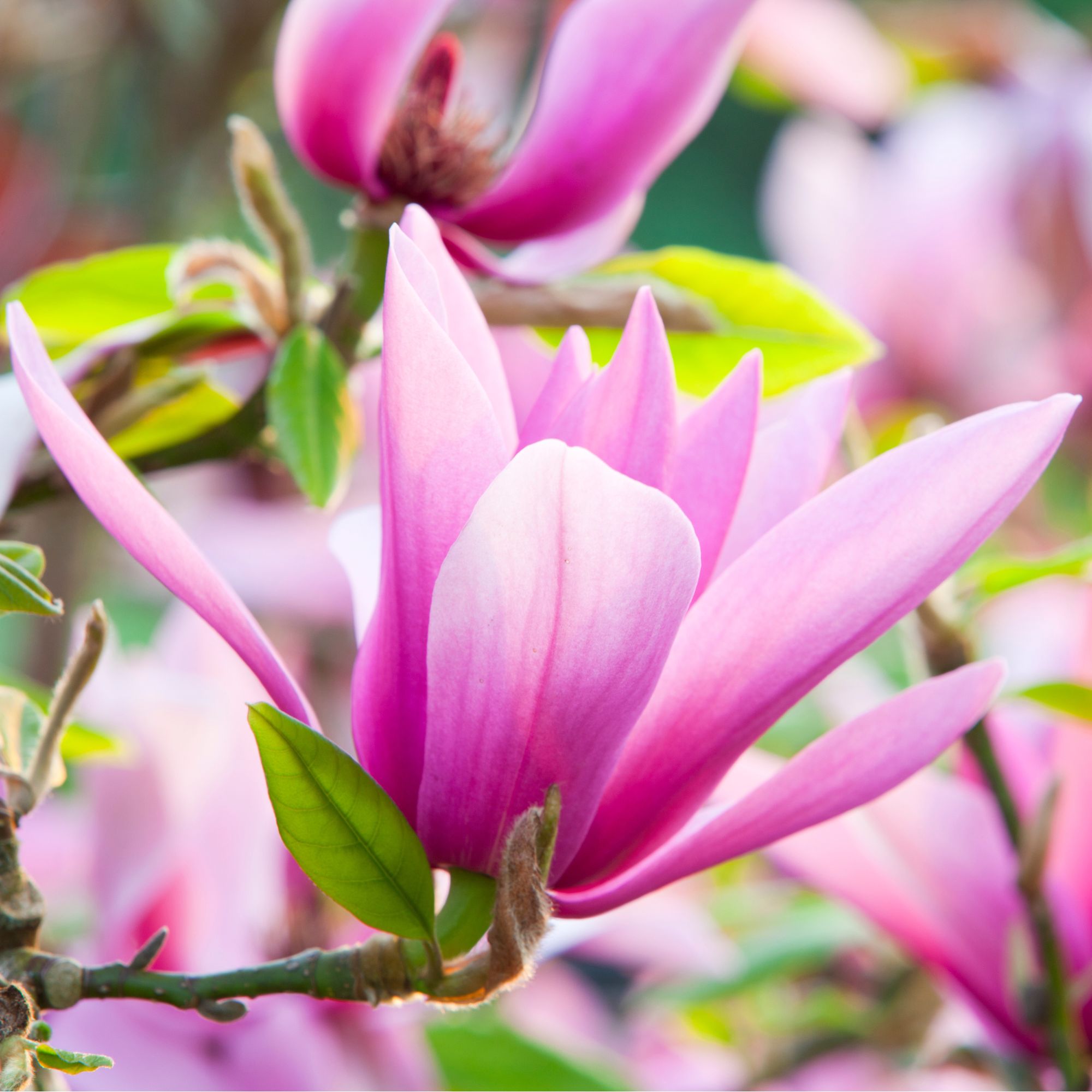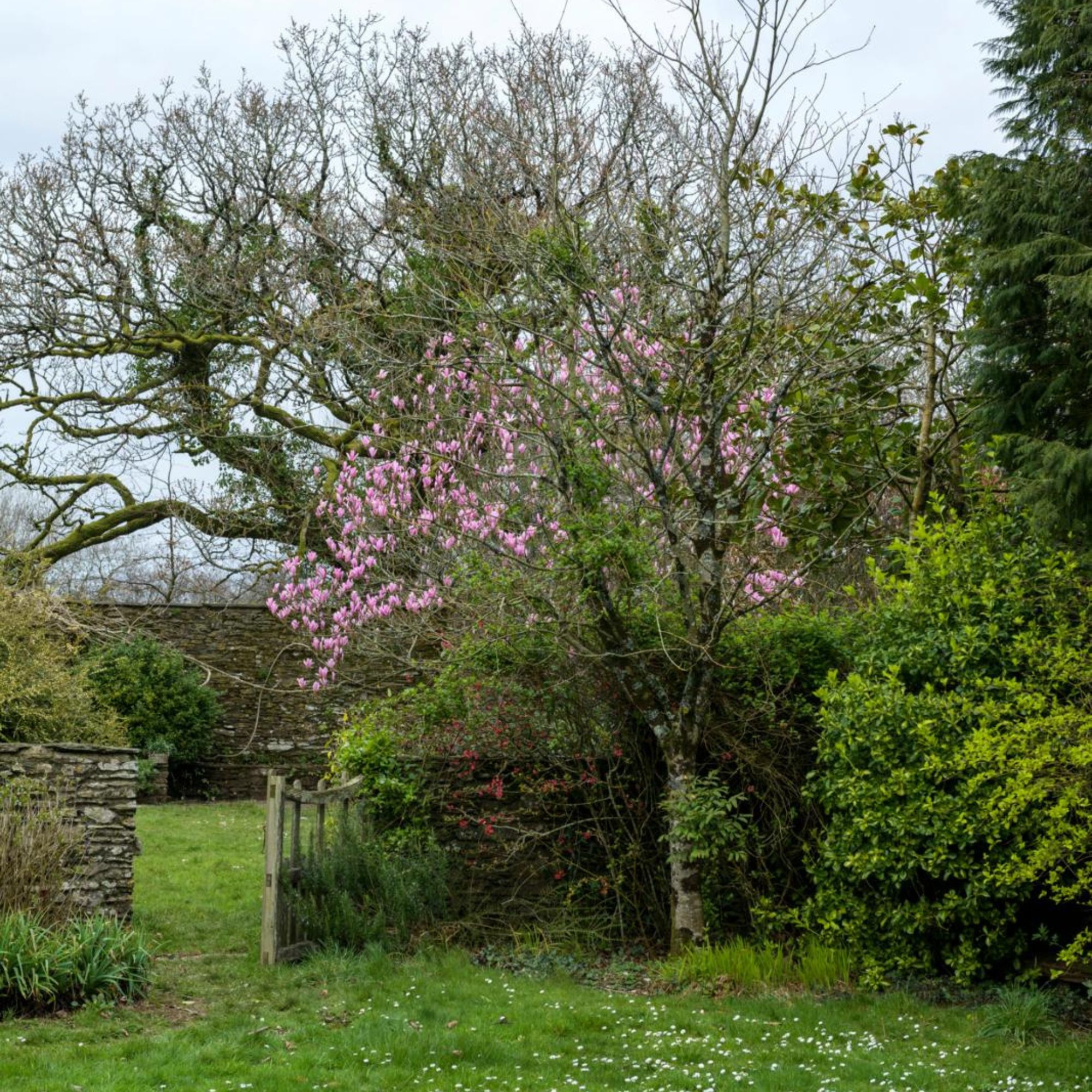
Gardening season is never over, and learning how to plant a magnolia tree needs to go to the top of your list of garden ideas this November.
Why? Well, because they're beautiful, quite frankly – and because they are one of those magic plants that will add value to your home.
Grab yourselves a shovel, then, and let's get started...
How to plant a magnolia tree
We know, we know: it's raining, it's pouring, and it's really bloody cold out there. The last thing you want to be doing is learning how to plant a magnolia tree, right?
Wrong! November is, in fact, the very best time to jump on this garden trend, according to our clever bevy of tame horticultural experts.

'You should plant a magnolia tree early in the month,' advise the team at Thompson & Morgan, adding that you should take care to choose 'either a spring or summer flowering variety in pink, yellow, white or deep purple.'
Tempted to jump on the bandwagon and learn how to plant a magnolia tree, then?
Here's what you have to do...
What you will need:
Before you get started, it's a good idea to gather everything you need to hand (after all, there's nothing worse than starting a cold weather job than having to keep stopping and starting):
- A spade, like this Spear & Jackson Traditional Stainless Steel Border Spade from Amazon
- A good quality compost (most magnolia prefer slightly acidic conditions, so try John Innes Potting Compost from B&Q with some grit mixed through)
- Organic mulch of rotted bark chips, manure or garden compost
- A stake or support (try the Woodside Tree Support Stake Pack from Amazon)
- Fertiliser (magnolia trees will benefit from fertilising 2-3 times per year in spring, summer and autumn, and we recommend Miracle Gro Premium Azalea, Camellia and Rhododendron Continuous Release Plant Food from Amazon)
You will also, of course, need a spring or summer-flowering variety of magnolia.
Try one of the following:
- Magnolia × soulangeana from Crocus
- Magnolia 'Heaven Scent' from Thompson & Morgan
- Magnolia x brooklynensis Yellow Bird from Amazon
How-to guide:

So, you've got everything to hand and the time is right (remember, remember to aim for early November). It's time, then, to learn how to plant a magnolia tree.
And, thankfully, we have the warmth and wisdom of Gardens Revived co-director, Christopher O'Donoghue, to guide us through the process.
'I love magnolia trees,' says Christopher, sharing that he has a remarkably established one growing in his own garden at home. 'November is the best time to plant yours if you're hoping for springtime or summertime blooms, too, so it's well worth putting in the effort now.'
With that in mind, then, let's get started...
1. Select a location
It's all well and good knowing how to plant a magnolia tree, but it's just as important to know where to put it.
'Choose a spot with well-draining, slightly acidic soil that receives full sun or partial shade,' says Christopher.
'Remember: magnolias might love to sunbathe, but they still prefer sheltered areas to protect them from hot afternoon sun and strong winds. And they tend to establish quicker when their roots are shaded, too, which is why grim and grey November is such a great time to plant.'
2. Prepare the area
You'll want to dig a hole that's twice as wide but just as deep as the root ball of your young magnolia tree, and make sure that you mix the removed soil with compost to improve drainage and fertility.
3. Get planting
'Gently remove the magnolia tree from its container, being careful not to disturb the roots,' says Christopher, who knows everything there is to know about how to plant a magnolia tree.
'Place it in the centre of the hole at the same depth it was in the container, fill the hole with the compost-mixed soil, and pat it down gently.'

Christopher adds that you should water the tree deeply after planting to settle the soil and ensure the roots are well-moistened, and take the time to apply a layer of organic mulch around the base of the tree: never directly against the trunk.
'This helps retain moisture and regulate soil temperature,' he says.
4. Stake it
Don't be afraid to make like Buffy the Vampire Slayer and get staking, especially if your magnolia tree is in a windy area.
'Just take care to ensure your stakes don't damage the roots of your new tree,' says Christopher.
5. Show it some TLC
If things get dry over the winter months, you'll want to water your magnolia pretty regularly until it's established itself. Take care, too, to prune minimally – and remember to apply another mulch of well rotted bark chips or garden compost to the base of the plant come spring.
'You'll want to fertilise – sparingly, mind – in the spring,' adds Christopher. 'Too much can and likely will harm your young tree.'
FAQs
What month is best to plant a magnolia tree?
November is a brilliant time to plant a deciduous magnolia (that's the kind that drops its leaves over winter), so long as you get in before those pesky frosts hit.
If you favour an evergreen magnolia, it's best to wait until the early spring to get planting.
Where is best place to plant a magnolia tree?
Magnolias might be hardy, but that doesn't mean they aren't picky about where you're going to put them!
'Pop them in a sunny spot that is sheltered from strong winds,' says Christopher, reminding us that once again that magnolias generally prefer full sun to partial shade.
'They tend to thrive in slightly acidic, well-draining soil, but don't despair if this doesn't sound like your garden, as you can amend the soil with organic matter to improve drainage.'
He adds that, if you're in an area at risk of very heavy frosts, you should plant your magnolia tree in a sheltered location to mitigate frost damage. And always check the instructions of your specific magnolia variety before you get planting!
How much space does a magnolia tree need?
As the Royal Horticultural Society (RHS) makes abundantly clear, the amount of space your magnolia needs will depend on the variety.
Star magnolias, for example, will work well in small gardens (and are even compact enough to be grown in containers).
An evergreen magnolia, meanwhile, is best for growing against a large wall, and something like a Magnolia × soulangeana will work as a large specimen tree in a lawn.
Can magnolias grow in pots?
If you don't have room for a large tree, but can't resist the allure of a magnolia, then remember that the more compact varieties grow very well in pots (not least of all because you can amend the soil to suit them perfectly).
Now that you've learned how to grow a magnolia tree, then, it's time to get planting yours.
Just don't forget your wellies and raincoat: it's going to be more than a little soggy getting this bit done, but you'll be so glad you did when your tree blooms next year. Trust us.







